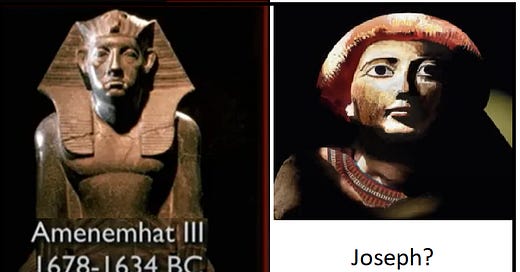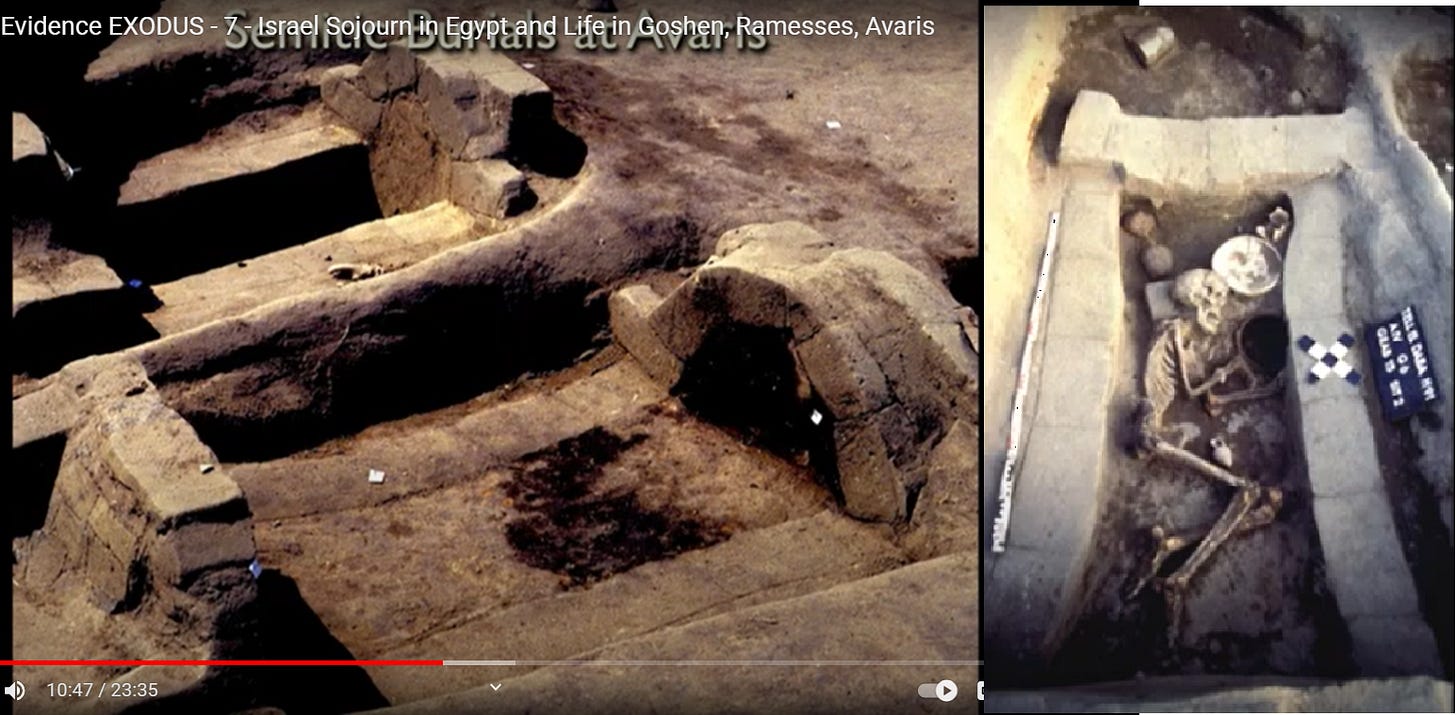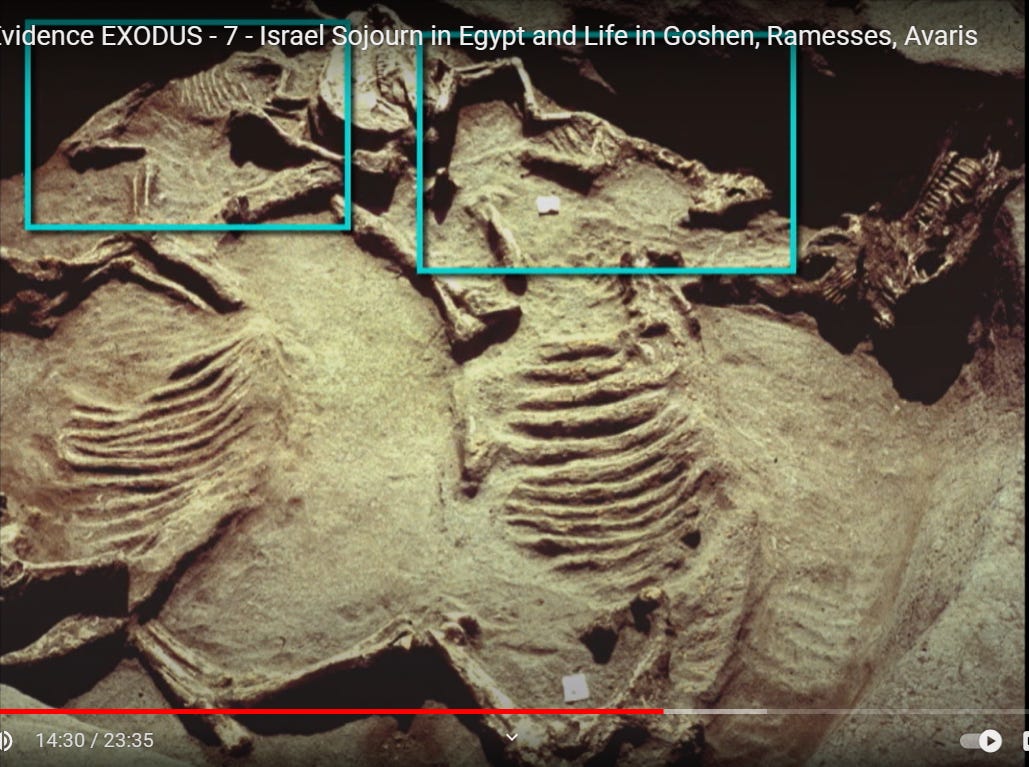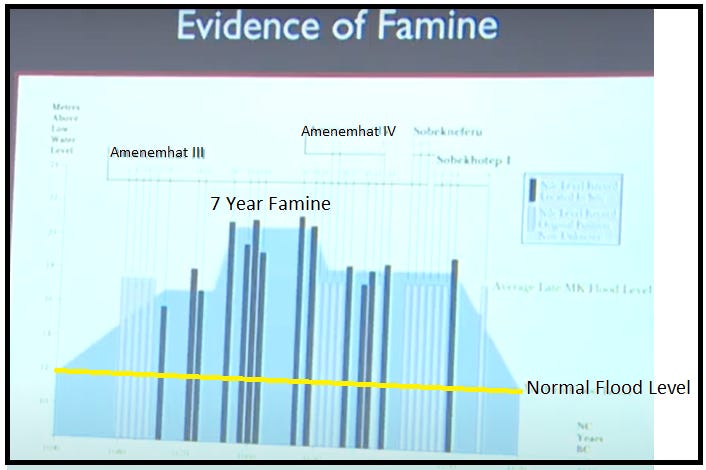EVIDENCE OF THE ISRAELITE SOJOURN IN EGYPT
The following images and statements are from a series of videos with David Rohl a year or so ago. I personally don’t care whether the Bible is accurate or not. I have reason to believe that it’s not entirely accurate, but much of the history portrayed in the Bible seems to be proving to be largely true. A lot of evidence for the sojourn in Egypt is shown below. I plan to show evidence for the Exodus soon.
Patterns of Evidence EXODUS - 2 - Journey, Egyptology and Egyptian History with David Rohl youtube.com/watch?v=gVHmLJsqmcg
David Rohl explained that Egyptologists made a major mistake by assuming that the Biblical pharaoh, Shishaq, was pharaoh Shoshenk, which resulted in greatly skewing the dating of Biblical events. Shishaq attacked Juda. Shoshenk did not; he drove invaders out of northern Israel in defense of Israel.
Patterns of Evidence EXODUS - 3 - Rameses, Shysha, Shishak youtube.com/watch?v=7AXgKD9V2rc&t=1s
Shishaq was actually Ramses II, whose full name was Riyamashisha. It was shortened to Shisha and later a Q or K sound was added due to a misinterpretation of the actual W symbol (in Shishaw). Ramses attacked Judah a few years after Solomon's death and stole the riches Solomon had accumulated. It was out of revenge. For Solomon had married Ramses' daughter, but he kept her away from his palace because she was a heathen and he had other wives whom he preferred. When Ramses found that out, he plundered Jerusalem.
Patterns of Evidence EXODUS - 4 - The Israel Stela youtube.com/watch?v=1c6Pf6h-mz8&t=4s The word Israel people is toward the bottom of the Israel stela, highlighted above reading from right to left. The stela is from Egypt from the time of King Merneptah, successor to Ramses II.
The Israel Stela was Merneptah’s commemoration of his father Ramses’ conquest of Israel under Rehoboam, Solomon’s successor, and others. The building in Karnak, Egypt has a diagram of the wars of his father and grandfather. The building shows Israelites in chariots, but they didn’t have chariots at the time of Moses. The inscription on the right above says Israel. It’s on a block from a century before Ramses, proving again that Ramses was not the pharaoh of the Exodus.
Is There Archaeological Evidence Of The Exodus? youtube.com/watch?v=v0bfs6tFf-0
The stratigraphy of Jericho shows that it was uninhabited during the time that conventional chronology places Moses, Joshua and the Exodus. (LB = Late Bronze Age; IA = Iron Age.)
The above Wall of Time shows that the Exodus events don’t fit in Egypt’s New Kingdom, but do fit in the Middle Kingdom.
Either Ramses II or Thutmose III is most often supposed to be the pharaoh of the Exodus, but they were the greatest pharaohs, unlike the pharaoh who was ruined during the Exodus. A better place to start to find the true pharaoh of the Exodus is to suppose that Jericho was inhabited until destroyed just after the Exodus.
Patterns of Evidence EXODUS - 7 - Israel Sojourn in Egypt and Life in Goshen, Ramesses, Avaris youtube.com/watch?v=ijgjPwc5Db8 (IA = Iron Age; MB = Middle Bronze Age. Exodus c. 1446 BC; Conquest of Canaan c. 1406 BC.)
Before they got to Jericho, the Israelites wandered in the desert for 40 years. Before the Exodus they lived in the land of Goshen in the Nile delta.
The name of the Israelite city of Avaris in Goshen was later changed to Ramses.
The above is a closeup satellite view of the Israelite city, Avaris.
The above is excavation of Avaris in the 1960s.
Above is a model reconstruction of Avaris. I think Egyptians inhabited the white buildings and Israelites the rest. Avaris is the only real candidate for the location of the Israelites during the Sojourn.
Above are some graves in Avaris. They were made from mud brick, since there were few if any stones. Isrealites were buried on their sides with knees bent as above. Egyptians were buried on their backs. Pottery in the grave allows for dating it.
The above bronze belt and the expensive, high-status knives were found in some of the graves.
The above are 2 donkeys and 2 sheep buried with one of the people. The sheep came from Syria, where the patriarchs came from. And they were shepherds.
Above left is the only depiction of Asiatics entering Egypt about the time of Joseph, wearing colored coats. On the right is one of the Hyksos leaders.
Above are the co-ruling pharaohs of Joseph’s time. The author says the sculptures were made to look sad because they were concerned about the welfare of their people.
Above shows the annual Nile flooding at the time of Joseph. The flooding was 4 times normal for the 7 years. This caused famine because there wasn’t enough time to grow crops between floods for those 7 years.
Above is a lake west of the Nile which Joseph or someone connected a canal to in order to help control flooding. The pharaoh then had his pyramid built by the canal.
The above 2 building foundations were found at Avaris and there are very good indications that they belonged to Jacob and Joseph. They were the largest buildings there and the bigger one had 12 columns and 12 tombs apparently for the 12 sons of Jacob. The tomb for Joseph appears to have been pyramid-shaped. Largeness indicates high rank.
Above left is the tomb under the small pyramid. In the center is a hole in the burial chamber within the red rectangle marker. No bones were found within it. The blue rectangle shows the head of a statue in the tomb chapel. The statue is shown on the right. It was broken, possibly by Egyptians after the Exodus, but it shows red hair and yellowish skin and high rank, as well as a multicolored coat. Top right is the face restored. It’s likely Joseph, because it’s of larger than life size, indicating high rank. And the burial chamber was empty apparently because Joseph told his family to take his body to Canaan when the Israelites would later move there (200 years later).
I’ll show evidence of the Hebrew Enslavement, the Exodus and the Conquest of Canaan next.
























